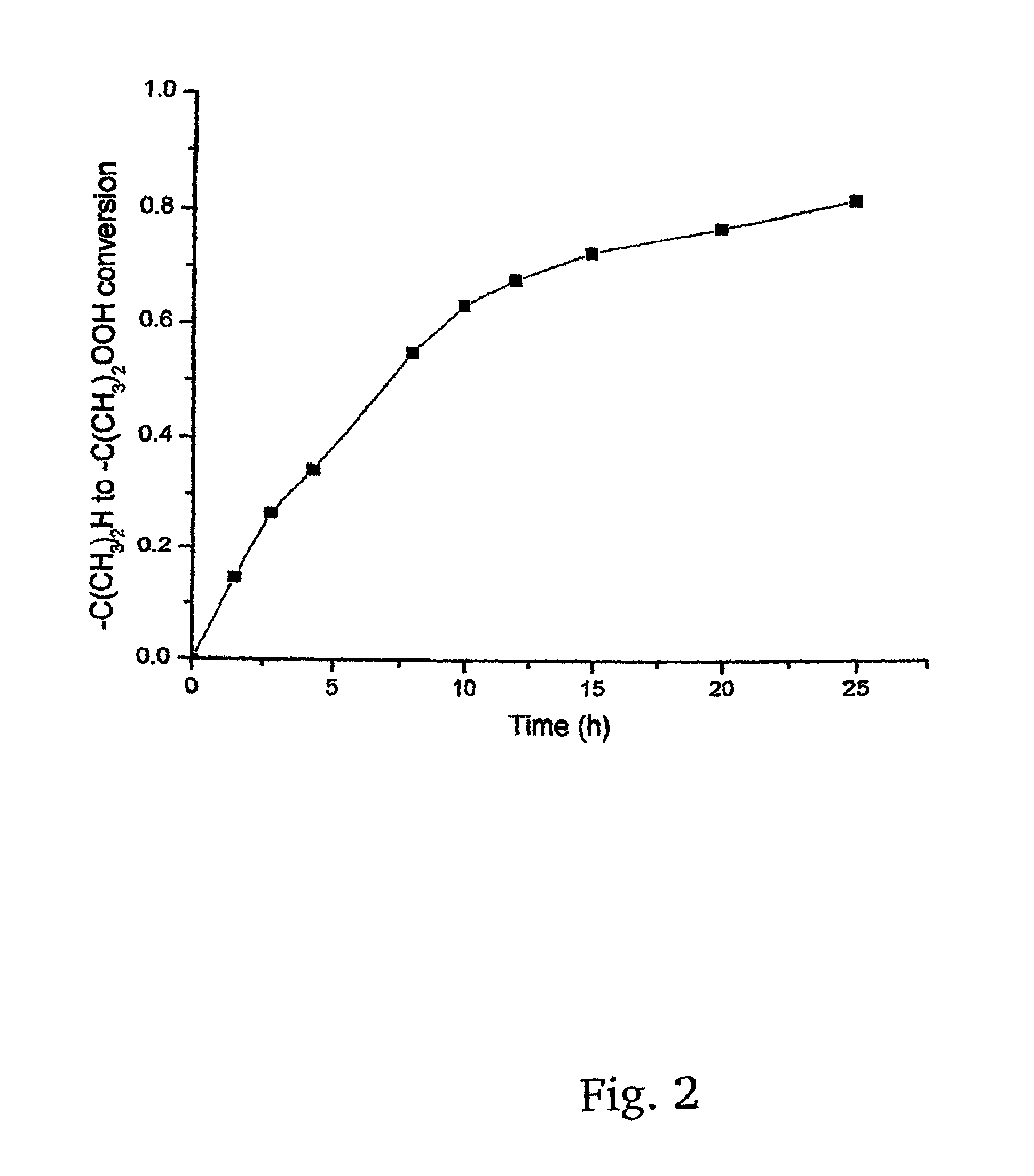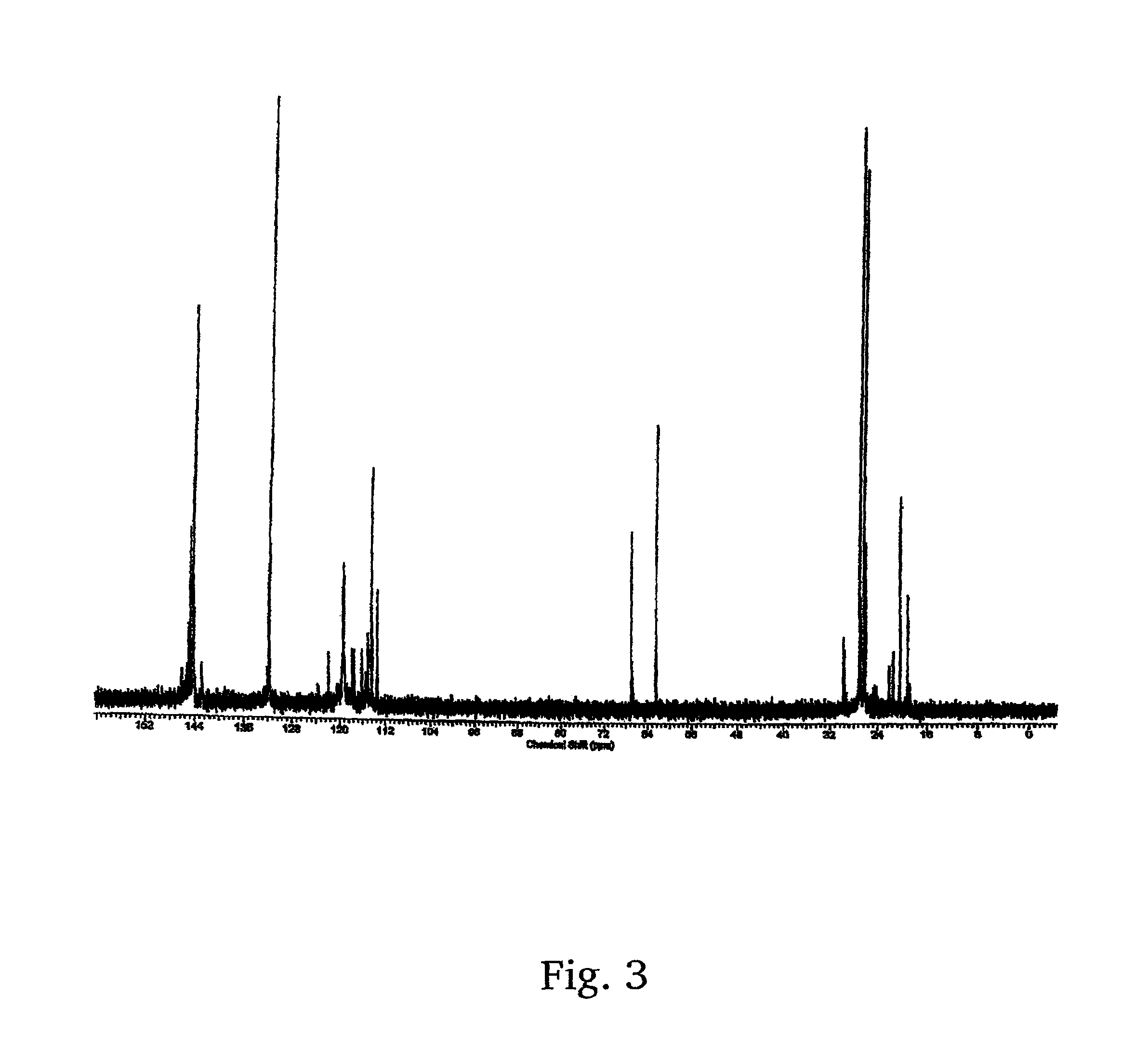Method for the synthesis of low cost initiators for telechelic polyisobutylenes
a technology of initiators and telechelic polyisobutylenes, which is applied in the direction of organic chemistry, hydrocarbon preparation catalysts, halogenated hydrocarbon preparations, etc., can solve the problems of high cost of testing to obtain fda approval of the initiator of isopropyl group, no other structure has been commercially available and/or commercially successful for the specific use, and the effect of low cos
- Summary
- Abstract
- Description
- Claims
- Application Information
AI Technical Summary
Benefits of technology
Problems solved by technology
Method used
Image
Examples
Embodiment Construction
[0019]The present invention provides for a new low cost method for synthesizing a desirable and efficient polymerization initiator for living carbocationic polymerizations. Specially, a new method for the synthesis of 1-tert-butyl-3,5-bis(2-chloropropan-2-yl)benzene, or as alternatively stated, 1,3-di(chloropropyl)-5-tert-butylbenzene (hereinafter sometimes referred to as “tBu[Cl]2”) is provided. It will be appreciated that 1,3-di(chloropropyl)-5-tert-butylbenzene is, more specifically, 1,3-di(2-chloropropyl)5-tert-butybenzene, but that it is to be understood that the chloro group, or any other group (e.g., peroxy, hydroxy) will have the active group in the 2 position unless otherwise stated. This product is well-known as a difunctional carbocationic initiator, but has never been easily synthesized, and never made by the method disclosed herein. More particularly, the new method utilizes an inexpensive simple starting material, 1,3-diisopropylbenzene, and cheap inorganic reagents to...
PUM
| Property | Measurement | Unit |
|---|---|---|
| temperature | aaaaa | aaaaa |
| pressure | aaaaa | aaaaa |
| pH | aaaaa | aaaaa |
Abstract
Description
Claims
Application Information
 Login to View More
Login to View More - R&D
- Intellectual Property
- Life Sciences
- Materials
- Tech Scout
- Unparalleled Data Quality
- Higher Quality Content
- 60% Fewer Hallucinations
Browse by: Latest US Patents, China's latest patents, Technical Efficacy Thesaurus, Application Domain, Technology Topic, Popular Technical Reports.
© 2025 PatSnap. All rights reserved.Legal|Privacy policy|Modern Slavery Act Transparency Statement|Sitemap|About US| Contact US: help@patsnap.com



